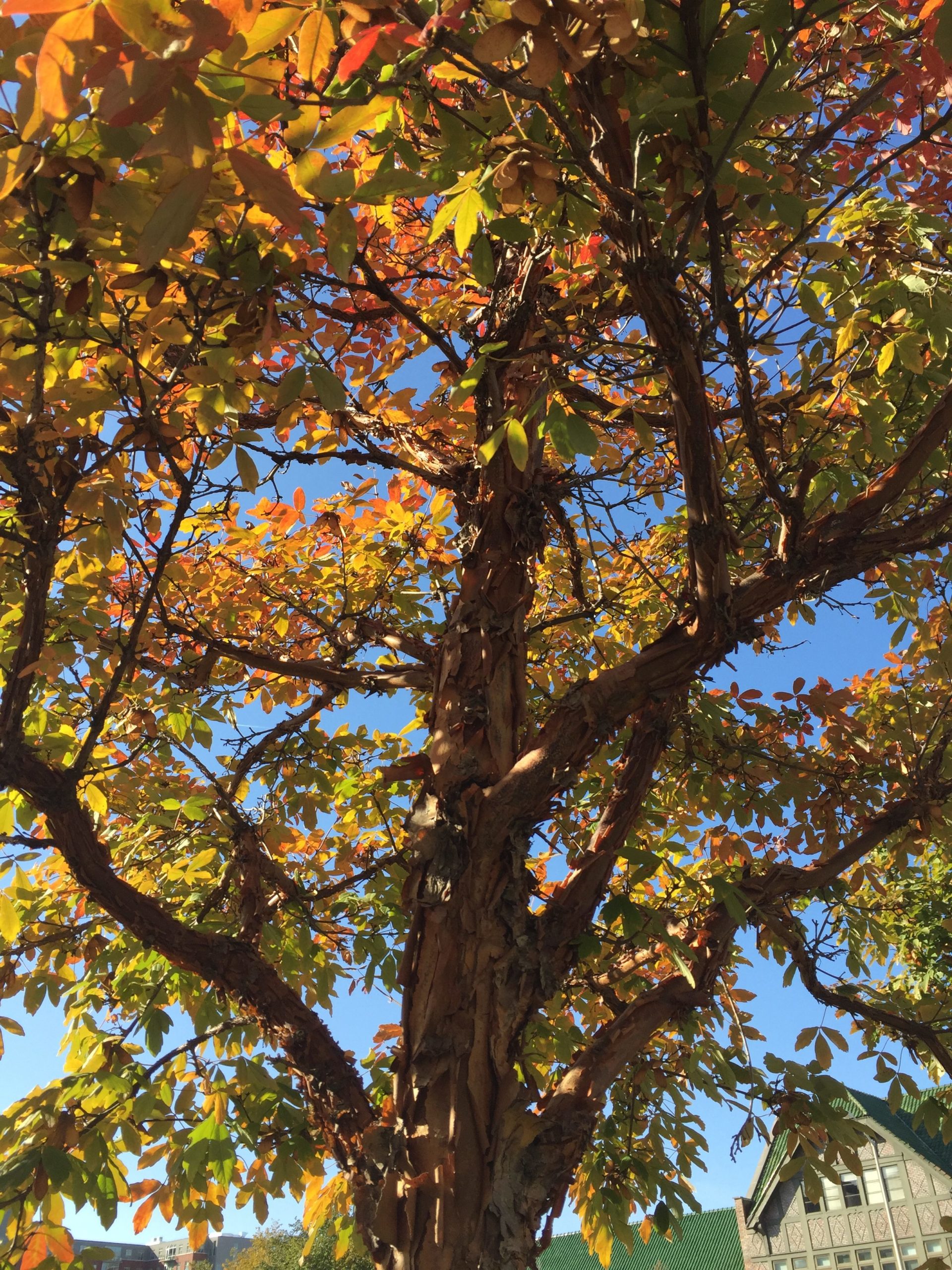
It is adaptable and able to tolerate drought, clay soil, and alkaline soil. Shantung maple (Acer truncatum): The Shantung maple is a medium-sized tree that works well in the parkway and is often selected as a shade tree. However, because of their aversion to high pH soils, sugar maples are typically not recommended in the Intermountain West. These trees have excellent canopy form and beautiful fall colors. Trees are used to collect sap which is boiled down into maple syrup. Sugar maple (Acer saccharum): Sugar maples are native to most of the northeastern United States. In the Midwest and the eastern United States, red maples are sought after for their beautiful red fall foliage. Unlike other maples, red maple is fairly tolerant of wet soil. Like the silver maple, red maples often struggle in high pH soil, showing symptoms of iron chlorosis and sometimes manganese deficiency, making them less suited to the Intermountain West. Red maple (Acer rubrum): These trees are mediumsized and can be prone to breakage with wind or snow load if narrow branch angles are present. Many of the silver maple cultivars also produce copious samaras that can be messy and difficult to control after germination. Silver maples have brittle wood that can break easily in gusty winds, and they are extremely prone to iron chlorosis in Utah. Silver maple (Acer saccarinum): These trees are known for rapid growth and the ability to provide ample shade due to their large size. The papery, “helicopter” seeds (samaras) of Norway maples may become weedy in certain situations (Figure 2). They are considered somewhat shallowrooted, and roots may interfere with sidewalks and other landscape plants. Norway maple is probably the most commonly planted maple in the Intermountain West. Norway maple (Acer platanoides): This group of maples is well adapted to the Intermountain West and is typically tolerant of alkaline soil and arid climate. For specific cultivar recommendations, see Table 1.įigure 2. Understanding these species’ general characteristics will help you determine if a cultivar may be a good fit for your landscape. There are several parent species from which maple hybrids and cultivars are derived. When selecting a tree for your landscape, choose a cultivar that is well adapted to your soil and conditions. If left untreated, branch death or even tree death can occur.

This nutrient deficiency causes yellowing leaves (chlorosis) with green veins, and in extreme conditions, can cause death of leaf edges. A common problem associated with maples in the Intermountain West is iron chlorosis (Figure 1). In Utah, high pH is common and may cause some micronutrients, particularly iron, to be less available, making it difficult for certain trees to take up needed nutrients. Soil chemistry and characteristics are important considerations when choosing maple trees. There are many factors to consider when selecting a maple for your landscape, including tree size, leaf color, fall foliage color, leaf shape, and disease resistance. Of the beginning of tissue necrosis from a chronic Interveinal chlorosis characterized by the yellow leavesĪnd green veins. Fall colors typically range from yellow to bright red, adding a burst of color to the landscape late in the season.įigure 1. Maples can create a focal point and ornamental interest in the landscape, providing interesting textures and colors, and of course, shade. Because trees come in a range of shapes and sizes, there is almost always a spot in a landscape that can be enhanced by the addition of a maple. Tree shape can vary greatly, ranging from upright, columnar, rounded, pyramidal to spreading. Trees vary in size and shape, from small, almost prostrate forms like certain Japanese maples (Acer palmatum) and shrubby bigtooth maples (Acer grandidentatum) to large and stately shade trees like the Norway maple (Acer platanoides).

There are over one hundred species, each with numerous cultivars (cultivated varieties) that are native to both North America and much of Northern Europe. Maple trees (Acer sp.) are a common fixture and beautiful addition to Utah landscapes.


 0 kommentar(er)
0 kommentar(er)
